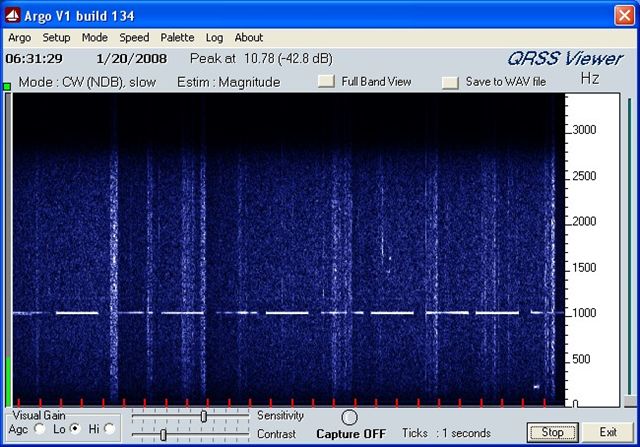 |
| United We Stand |
|
|
Brainerd Area Amateur Radio Club |
|
Moonbounce January 19 and 20, 2008 |
 Lunar
Echo Experiment: The U. S. Government HAARP (HF Active Auroral Research
Program) near Gakona, Alaska, conducted testing and solicited comments from
listeners everywhere. HAARP transmitted carriers on 6.7925 MHz and 7.4075 MHz,
which were directed at the moon. This was done around midnight on two nights in
late January. They transmitted for two seconds and then paused for three
seconds. Each experiment lasted one hour. I was one of the listeners and was
amazed to hear the original transmission followed by a one-second pause and then
two more seconds of signal. That last two seconds was the HAARP echo coming back
from the moon. Yes, that’s right, it took three seconds for the signal to make a
round trip. The signals were weak, but easily distinguishable between static
crashes from thunderstorms elsewhere in the country.
Lunar
Echo Experiment: The U. S. Government HAARP (HF Active Auroral Research
Program) near Gakona, Alaska, conducted testing and solicited comments from
listeners everywhere. HAARP transmitted carriers on 6.7925 MHz and 7.4075 MHz,
which were directed at the moon. This was done around midnight on two nights in
late January. They transmitted for two seconds and then paused for three
seconds. Each experiment lasted one hour. I was one of the listeners and was
amazed to hear the original transmission followed by a one-second pause and then
two more seconds of signal. That last two seconds was the HAARP echo coming back
from the moon. Yes, that’s right, it took three seconds for the signal to make a
round trip. The signals were weak, but easily distinguishable between static
crashes from thunderstorms elsewhere in the country.
In preparation for the event, I used an MFJ-259 Antenna Analyzer to set an antenna tuner on my G5RV antenna. This gave the best possible match to recover the most signal from the antenna. My Icom IC-751 Transceiver has a button to select between “Ham” and “general coverage receiver” modes enabling me to use the receiver outside the 40-meter Ham band for this experiment.
The static crashes were running S8 and the noise was at S6. The HAARP signal and noise were running about the same level. I switched to a 40-meter wire-loop antenna. The noise and signal were about 2 dB less. Signals varied from moment to moment, but the original and moon-bounced signals were clearly audible. Additional information is available at: http://www.haarp.alaska.edu Mark WØMH
 |
John KØJO used a software program called ARGO to display the received signal. Of particular interest is the broken white line, just below center, going from left to right. That is the received signal. |
This page was last updated 01/21/2008 Ø